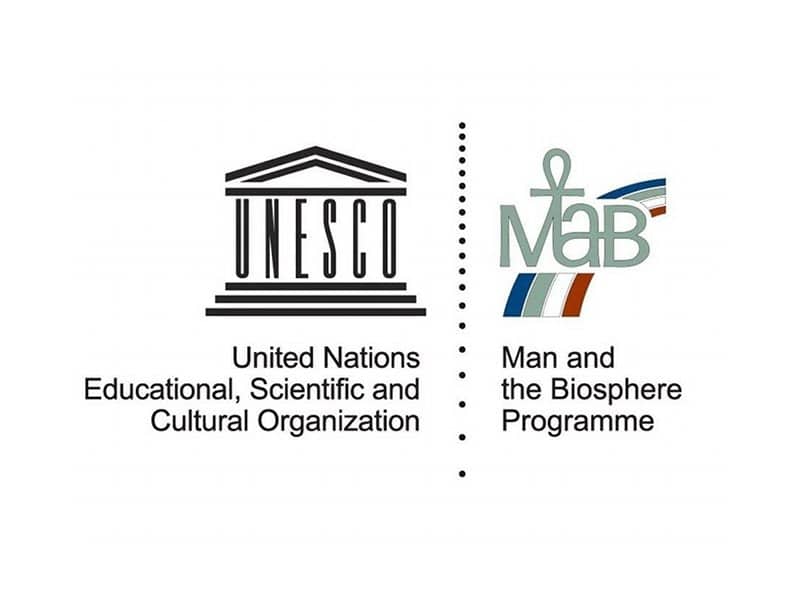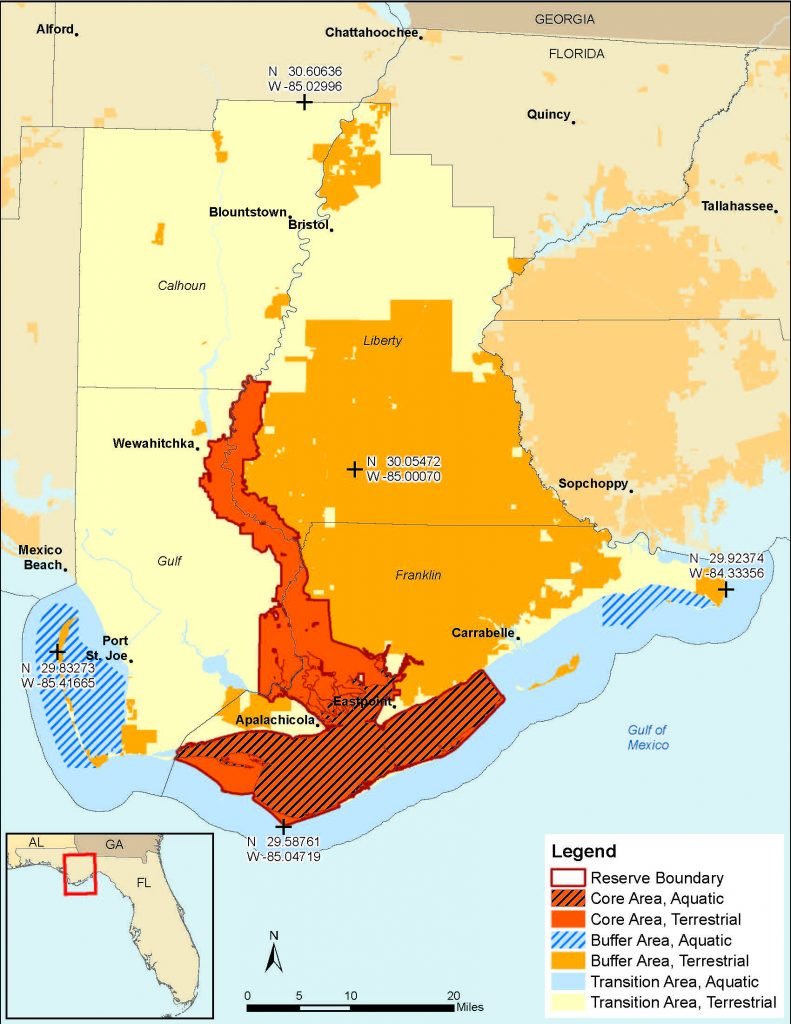Apalachicola Biosphere Region

The Apalachicola River, Bay and its drainage watershed encompass what is considered one of the least polluted, most undeveloped, resource-rich systems left in the United States. In 1983, the United Nations Educational, Scientific, and Cultural Organization (UNESCO) designated the Apalachicola Biosphere Region making it part of an extensive global network of extraordinary places that work to conserve natural and cultural resources, empower local decision making, improve human livelihoods, and promote economic development in sustainable ways. Biosphere regions seek to give people and communities the means to thrive in harmony with their environment.
What is a biosphere region?
Biosphere regions are globally-recognized areas where management seeks to achieve sustainable use of natural resources while ensuring conservation of the biological diversity. Local communities, state and national officials, businesses, scientific and educational institutions work together to develop integrated conservation management for the biosphere region.
Biosphere regions make up an extensive global network of protected areas covering 701 sites in 124 countries. This international network protects examples of the world’s major ecosystems and is devoted to conservation of nature and scientific research in the service of man. The United States has 47 biosphere regions; 23 are associated with the National Park System.
What are the benefits of being a biosphere region?
The biosphere region concept is a framework to guide and reinforce projects to enhance people’s livelihoods while ensuring environmental sustainability. They view human beings as part of a wider living community and foster respect and consideration of natural systems. At the global level, biosphere regions can serve as pilot sites or “learning places” to explore and demonstrate approaches to conservation and sustainable development, providing lessons which can be applied in areas throughout the world.
What are the objectives of biosphere regions?
1) Protect biodiversity and promote healthy, thriving ecosystems
2) Empower local decision making for sustainable development research, education and environmental protection
3) Foster sustainable economic and human development of the local communities
4) Encourage participation in the global network of biosphere regions
The Apalachicola Biosphere was first known as the Central Gulf Plain Reserve. The name was formally changed in 2018.

The Biosphere consists of three areas:
- The Core Area, a strictly protected system that contributes to the conservation of landscapes and species.
- The Buffer Area, which surrounds the core is used for activities compatible with sound ecological practices, like hiking, fishing, and camping.
- The Transition Area where human development is allowed in ways that are economically and ecologically sustainable.
The Apalachicola Biosphere Region encompasses 1,615,000 terrestrial and 432,600 aquatic acres across Calhoun, Gulf, Franklin and Liberty counties in the central panhandle of Florida. At the core of the Biosphere is the Apalachicola National Estuarine Reasearch Reserve, where the greatest protection occurs for 234,700 acres in the Apalachicola River and Bay area.
Our biosphere is one of the most productive estuarine systems in the Northern Hemisphere. It provides a home to over 54 species of plants and animals who find themselves listed as endangered, threatened, or of special concern in addition to having the highest density of reptiles and amphibians north of Mexico.
To find out more about this and other Biospheres visit UNESCO's Biosphere Reserves page and the Center for Large Landscape Conservation's Biosphere page.
